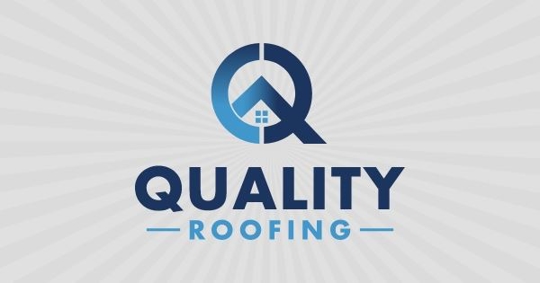The damage caused by roof leaks is almost immeasurable and is difficult to assess. This is because water can end up almost anywhere inside your home or commercial building’s structure. Water leaks can result in extensive mold growth, structural damage, high energy bills, and fire hazards. Sadly, you may not know that your roof is leaking until several months have passed.
Even if you identify the cause of a roof leak, you may only diagnose a fraction of the problem. If you suspect a roof leak, your best option is to contact a local roofing contractor in Florida. A professional roofer can diagnose the problem and determine the solution.
7 Common Causes of Roof Leaks
Cracked Flashing
Roof flashing is a thin material, usually galvanized steel, that professional roofers use to direct water away from the roof’s critical areas, wherever the roof plane meets a vertical surface like a wall or a dormer. Flashing is installed to surround roof features, such as vents, chimneys, and skylights. Water should run down the side of the flashing and be directed to the shingles instead of finding its way into the roof deck.
Cracks in the flashing reduce water resistance, causing the roof to leak. The most common cause of flashing cracks is poor installation, which leads to exposure to the outside elements. Cracks can also form as a result of the wear and tear of the flashing sealant. For instance, some tar sealants do not create a full seal that lasts.
Roof Penetrations
Roof penetrations are common on residential and commercial roofs. Roof penetrations may include
- Satellites
- Vents
- Drains
- Pipes
- Gas lines
While these are vulnerable areas for leaks, they can be properly sealed during a roof installation or roof inspection.
Broken Shingles
Asphalt shingles are not made of asphalt all the way through. Instead, they consist of fiberglass or felt paper base coated with a waterproof layer of asphalt and topped with ceramic granules. The fiberglass base reinforces the shingle structure, giving considerable strength to the entire roofing system. Shingles can last for 20 to 30 years. However, that does not guarantee that they are leak-proof for that long.
If one shingle tears off the roof, it is possible that it was lying directly above a seam. Without a shingle in place to repel water, an unprotected gap between the lower shingles can lead to a leak. Water may find its way into a gap and leak under the shingles. You may not notice the leak immediately, if at all. However, a tiny leak can cause severe damage to your house.
Improper Skylight Installation
If you notice leaks around the skylights, they were likely installed or flashed improperly. To install a skylight, a contractor must penetrate the roof where the skylight is being fitted. If the skylight is not properly fitted, the roof is vulnerable to leaks. If the skylight isn’t properly insulated, it can cause condensation on the glass. This leads to drips and leaks from inside the skylight.
Skylights require ongoing professional roof inspections and maintenance. A good rule of thumb is to have your skylight inspected for leaks as often as your roof. Leaves and debris that collect around the skylight should be removed so that water can properly drain. Having your skylight inspected and maintained regularly will reduce the need for roof repairs from damaged flashing.
Clogged Gutters
If you have a 2,000-square-foot home, you can expect a minimum of 1,200 gallons of water to pour down the roof annually. A clean gutter will channel water through a downspout and away from your home. By contrast, a clogged gutter does the opposite—allowing water to spill over the sides and pour down your walls or back onto the roof. Pooling water on the roof can cause erosion, which weakens the roof structure and leads to leaks.
When your gutters are clogged, the water they collect has no place to go. Instead, it fills your gutters to the brim. A gallon of water weighs eight pounds. The extra weight can bend your gutters or tear them away from the roof. Clogged gutters can also cause water leaks on the inside of your home. Trapped water can rot the wooden fascia boards, letting moisture enter the home.
Roof Age
How long a roof lasts depends largely on the roofing material used. Asphalt shingles typically last 20 to 30 years, depending on the quality of the roofing. If you have wood shakes or shingles, they should last around 30 years. Slate, tile, and metal roofs can last 50 years or longer. As the roof gets older, the roofing material can become brittle and deteriorate. It’s not long before leaks appear.
Expansion and contraction with the change in temperatures cause aging roof materials to crack. Years of harsh UV rays can melt the tar that holds composition shingles together. When roofing materials reach their life expectancy, it may be time for a professional roof replacement when the roof starts leaking.
Shallow Roof Slope
A good roof pitch will balance how much gravity is pulling the water away from the roof versus into the roof. Regardless of what roofing material you use, a shallow roof slope will increase the potential for low slope leaks where the force of gravity causes water to seep through the roof before it drains to the ground.
If your roof has numerous problems with low slope leaks, several things could be going wrong. Your roof may have sunken areas where the water is puddling, or it may be flatter than necessary. To stop the leaking, you can have one side of the roof built up to slightly increase the pitch.
Schedule a Free Roof Inspection
Quality Roofing offers premier roofing services for homeowners in Florida. Call (850) 753-0041 or fill out the quick form on our contact page to schedule a free roof inspection.
The post Common Causes of Roof Leaks appeared first on Quality Roofing Solutions.

